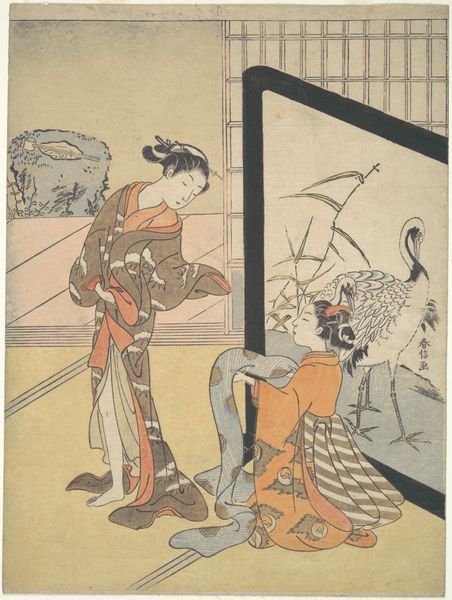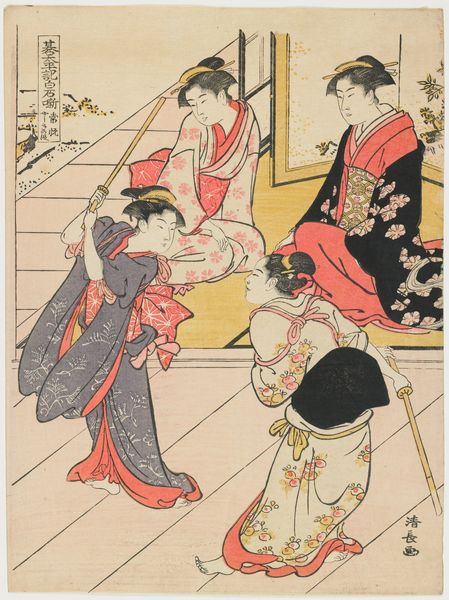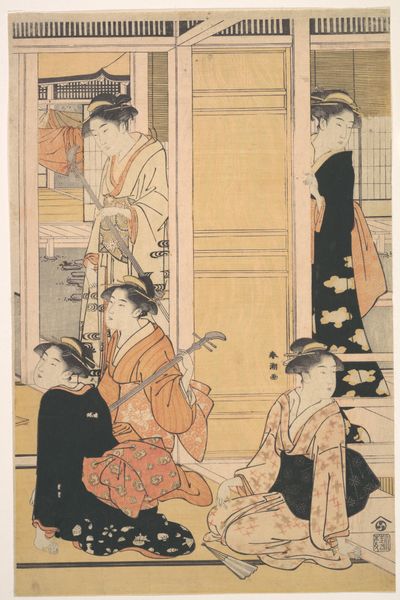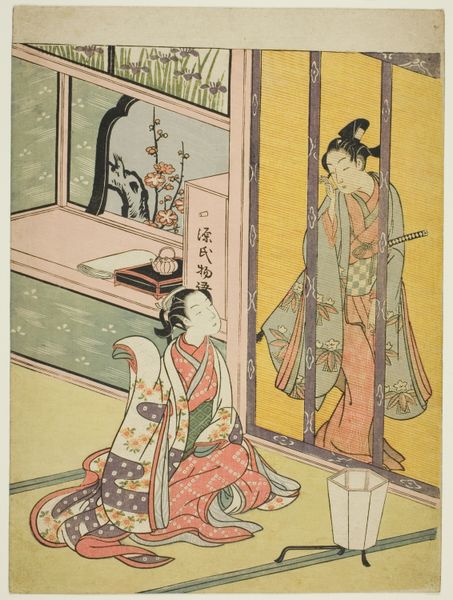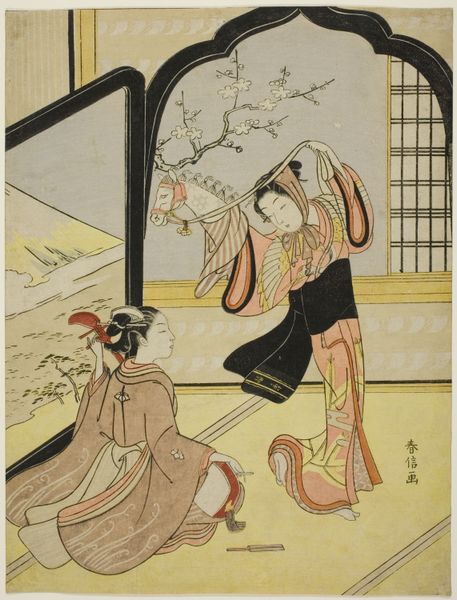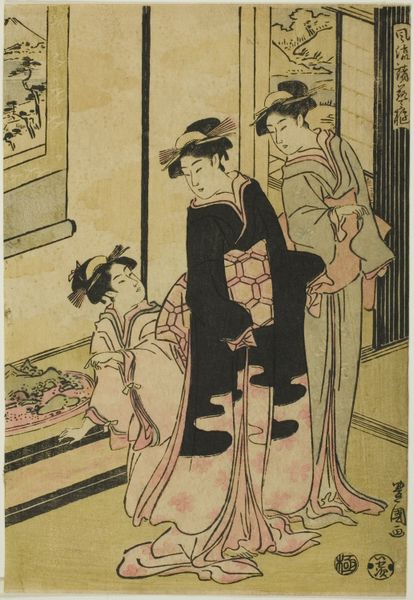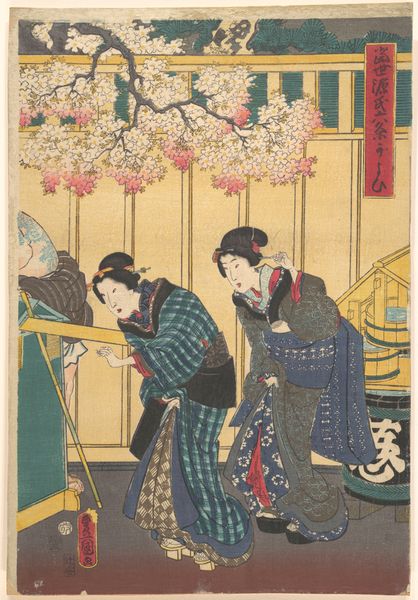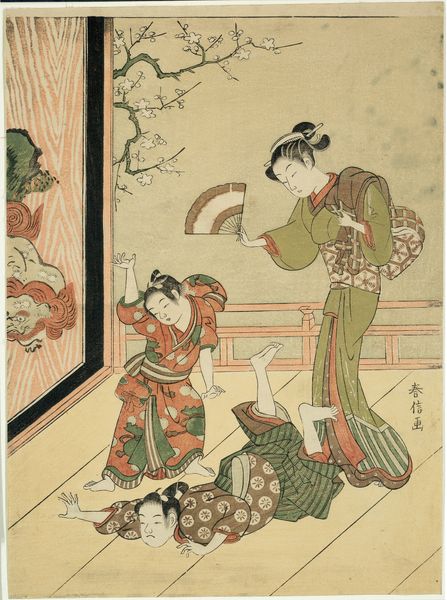
print, woodblock-print
#
portrait
# print
#
caricature
#
asian-art
#
caricature
#
ukiyo-e
#
woodblock-print
#
watercolour illustration
#
genre-painting
Dimensions: 39 × 26.3 cm (15 5/16 × 10 5/16 in.)
Copyright: Public Domain
Curator: Katsukawa Shuncho’s “Women in a Mansion,” dating from around 1780 to 1801. It's a Japanese woodblock print currently residing here at the Art Institute of Chicago. Editor: What strikes me is the stillness; these figures seem caught in a web of quiet contemplation, or maybe subdued anticipation. It’s visually serene but psychologically intriguing. Curator: Yes, Shuncho really captures the nuances of human relationships. We see the distinct social positioning even within this intimate group through their carefully depicted robes, each pattern speaking volumes about the wearer’s status and the available dyes and printing techniques of the time. Editor: Agreed. And the open window through which one figure gazes hints at freedom versus confinement, which feels almost symbolic. Are these women free agents or bound by the gilded cage they inhabit? Even the decorative architecture feels laden with implication. Curator: Exactly, the labor intensive process behind ukiyo-e prints during this era meant carefully dividing tasks; artisans specializing in carving, printing and of course, papermaking itself each had an impact on the final piece. Editor: And it all speaks to their perceived roles – the fashions of the day, elaborate hairstyles…It’s as if the artist invites us to interpret their story. Note the shared downward glances. Do these gestures reflect shared concern or some form of social assessment, a silent dialogue we aren't privy to? Curator: Their clothing also has a materiality to it, a texture achieved through layered printing. The woodblocks used would’ve been reused multiple times to reproduce these designs. Their popularity tells us a great deal about how aesthetics were becoming increasingly commodified. Editor: Very insightful; understanding production methods certainly unlocks the art's historical context. It enhances our reading of the piece, particularly those figures in rich garments and intricate designs, as they resonate cultural narratives and artistic evolution in society. Curator: Right, it prompts one to think about how an art object like this navigates the dynamics between skill and symbol. Editor: Indeed; now, walking away, that enclosed yet boundless, frozen moment lingers; a testament to how art, and artists, weave such evocative spells with lasting cultural reverberations.
Comments
No comments
Be the first to comment and join the conversation on the ultimate creative platform.

